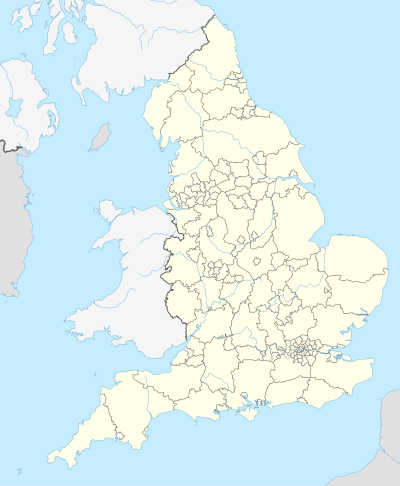| Bases of the United States Air Force Strategic Air Command in the United Kingdom | |||||
|---|---|---|---|---|---|
| Part of the Cold War | |||||
Royal Air Force Stations used by the United States Air Force Strategic Air Command (red) and 7th Air Division headquarters (blue) | |||||
| |||||
Between 1948 and 1992, personnel and aircraft of the United States Air Force (USAF) Strategic Air Command (SAC) were routinely deployed to bases in England. An informal agreement to base SAC bombers in the UK was reached between US General Carl Spaatz, and Marshal of the Royal Air Force (RAF) Lord Tedder, in July 1946. At that time there were only three bases in the UK deemed suitable for operating Boeing B-29 Superfortresses: RAF Lakenheath, RAF Marham and RAF Sculthorpe. These were airbases that had been extended during World War II when there were plans to use B-29s against Germany. When the Berlin Blockade began in June 1948, two B-29 groups deployed to the UK, but neither was equipped with Silverplate bombers capable of carrying nuclear weapons. Nuclear-capable Boeing B-50 Superfortress bombers began deploying in 1949, and nuclear bombs followed in 1950.
The original bases in East Anglia were considered inadequate for the deployment of the forces called for in the Offtackle war plan, and there were concerns that they were exposed to a surprise attack from the North Sea. New bases were developed at RAF Brize Norton, RAF Upper Heyford, RAF Fairford and RAF Greenham Common were therefore developed as bases, which began to be used in 1952. The bases were initially manned by the RAF, were handed over to the USAF in 1951. They continued to be known as RAF stations, and the Royal Air Force Ensign was flown alongside the flag of the United States. The B-29 groups on the UK and the depot at RAF Burtonwood were placed under the 3rd Air Division. It became the Third Air Force in 1951, and SAC activated the 7th Air Division to control SAC forces in the UK.
In 1953 the propeller-driven B-29s and B-50s were replaced with Boeing B-47 Stratojet deployments to English bases. These temporary duty postings (TDY) typically involved an entire wing of 45 B-47s, along with 20 Boeing KC-97 Stratofreighter aerial refuelling tankers, which were held at readiness at an English base for ninety days. In 1958 TDY postings were replaced by a new system of overseas deployments called Reflex. A permanent SAC presence was established, with a SAC airbase group permanently assigned to each base, and the ninety-day deployments were replaced by twenty-one day deployments of two or three aircraft and crews. These aircraft were kept on full alert status for two weeks, which meant bombers and tankers were on the runway, fuelled and armed with a Mark 39 nuclear bomb, and ready to take off at 15 minutes notice. SAC B-47s in the UK were on alert during the Berlin Crisis of 1961 and the Cuban Missile Crisis, as were Thor missiles manned by RAF units, but with the warheads in the custody of SAC officers who controlled their launch through a dual key system.
With the introduction of intercontinental ballistic missiles and long-range Boeing B-52 Stratofortress bombers, SAC no longer required bases in the UK, and Reflex deployments ceased in 1965, but SAC bombers continued to visit, and the UK was used by the Lockheed U-2 and Lockheed SR-71 Blackbird reconnaissance aircraft. SAC Boeing KC-135 Stratotanker and McDonnell Douglas KC-10 Extender tankers based in the UK supported the abortive 1980 hostage rescue attempt in Iran and the 1986 United States bombing of Libya, and in 1991 joined B-52 bombers temporarily based in the UK to conduct bombing in Operation Desert Storm in 1991.

